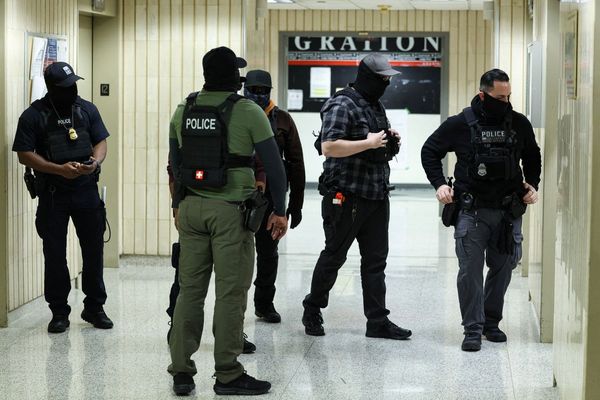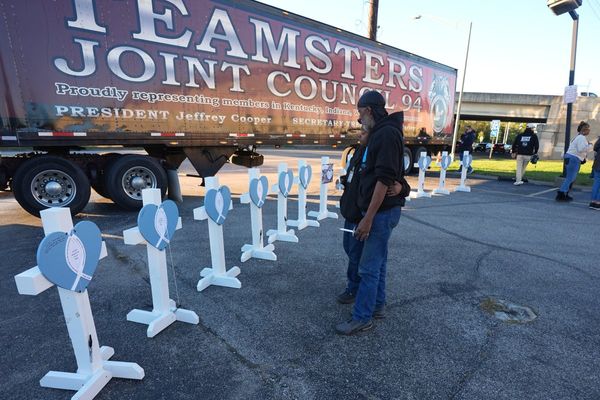
Labour’s victory in Hamilton is both a surprise and a vindication – a demonstration that in a byelection, shocks can take different forms.
It is a surprise to those of us in the outside world who felt certain of a Scottish National party victory, who saw Labour support plummet in the Scottish opinion polls, and the same polls showing Reform’s steeply rising.
The question became: would Labour scrape home in second, behind an experienced and personable SNP candidate, or even endure the humiliation of coming third behind a resurgent Reform. After all, it seemed Scottish Labour’s candidate, Davy Russell, was ill-equipped, so much so his party refused to put him up for a live television debate.
But for Scottish Labour’s strategists this is vindication. In a very clear way, this demonstrates the differences between what some call the “air war” – the contest taking place on social media and the airwaves, of rows over “racist” adverts and defeats in other contests, and the “ground war”, the dull and relentless grind of sending out activists to doorsteps, of leaflet delivering and face-to-face engagement.
While Reform was ploughing a record sum, up to £15,000, into a single advert wrongly and unjustifiably accusing Anas Sarwar, Scottish Labour’s leader, of prioritising Pakistanis, Labour canvassers were going door to door, or forensically using their social media advertising spend to target voters on YouTube and Facebook.
In the final phase of the campaign last week, Labour strategists were quietly insisting their canvassing told a different story. While their data showed more people were voting Reform than ever before, with their vote boosted by the Runcorn byelection victory in May, most of those came from Conservatives, they argued.
The Hamilton, Larkhall and Stonehouse byelection, called after the untimely death of the popular SNP MSP Christine McKelvie, was certainly a three-horse race, said one senior Labour figure. “People are annoyed with us”, they acknowledged. “But I genuinely don’t believe that the Reform vote is the size that people are speculating about.”
Scottish Labour believed it had begun the contest in April at about 20% – a figure close to the party’s national polling. Last week, Labour doorstep returns were putting its support at nearer 35%.
“I’m walking around quite happy,” the source said. “People have written us off and people have made a mistake. But it’s conditional on getting people out to vote.”
Some voters have been visited four times by Labour canvassers and politicians: Labour MPs and MSPs flooded the constituency – in part because the UK party, from Keir Starmer downwards, knew they could not afford further humiliation at the hands of Reform.
It seemed in the final days of the campaign that Reform’s “air war” was seriously wounding Labour’s campaign: Farage revealed on Monday that a Scottish Labour councillor, a young man who had previously been chair of Glasgow University’s Labour students group, had defected to Reform. That did shock the party.
But in the event, the ground war won – to the great relief of a UK party that has just been pummelled by Reform in Runcorn and England’s recent council elections. Labour also insisted that while Russell may seem unpolished to outsiders, he was a “well kent face”; a local born and bred, known in the bowls clubs and on the charity circuit.
“I think we have the better field operation and we’ve been around people’s doors,” the strategist said. “We’re hungry for the votes and people see that.”
This victory has sent a significant signal to Scotland’s political parties with less than a year to go before next May’s Holyrood elections.
Byelections are by their nature atypical – voters use them to send messages to incumbent governments – in this case both the Scottish and UK governments were possible targets of voter ire, and they can be poor guides to a general election.
Nonetheless, this was a tight result, and it demonstrated that Reform is in play in Scotland. It came third, reducing the Tories to also-rans, but only five points behind Labour and three behind the SNP – whose share of the vote plummeted from 46% to 29%. Turnout was low: 44% compared with 61% in the last Holyrood election.
While the national polls repeatedly put Scottish Labour at 19%, with Reform only one point behind, and the SNP in the mid-30s, this confirmed one other salient point. Labour’s electoral machine – the machine that won a landslide on a 34% share of the vote in last year’s UK general election, remains formidable.
For John Swinney, the SNP’s leader and first minister, this result has demonstrated his party has now to reequip itself by greatly improving its campaign machinery, its data-gathering and its strategies. The SNP was once the UK’s most formidable electoral machine but, based on this byelection result, that seems no longer to be the case.







